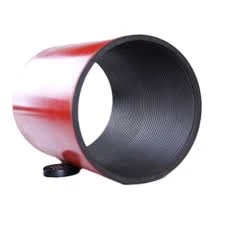- Afrikaans
- Albanian
- Amharic
- Arabic
- Armenian
- Azerbaijani
- Basque
- Belarusian
- Bengali
- Bosnian
- Bulgarian
- Catalan
- Cebuano
- Corsican
- Croatian
- Czech
- Danish
- Dutch
- English
- Esperanto
- Estonian
- Finnish
- French
- Frisian
- Galician
- Georgian
- German
- Greek
- Gujarati
- Haitian Creole
- hausa
- hawaiian
- Hebrew
- Hindi
- Miao
- Hungarian
- Icelandic
- igbo
- Indonesian
- irish
- Italian
- Japanese
- Javanese
- Kannada
- kazakh
- Khmer
- Rwandese
- Korean
- Kurdish
- Kyrgyz
- Lao
- Latin
- Latvian
- Lithuanian
- Luxembourgish
- Macedonian
- Malgashi
- Malay
- Malayalam
- Maltese
- Maori
- Marathi
- Mongolian
- Myanmar
- Nepali
- Norwegian
- Norwegian
- Occitan
- Pashto
- Persian
- Polish
- Portuguese
- Punjabi
- Romanian
- Russian
- Samoan
- Scottish Gaelic
- Serbian
- Sesotho
- Shona
- Sindhi
- Sinhala
- Slovak
- Slovenian
- Somali
- Spanish
- Sundanese
- Swahili
- Swedish
- Tagalog
- Tajik
- Tamil
- Tatar
- Telugu
- Thai
- Turkish
- Turkmen
- Ukrainian
- Urdu
- Uighur
- Uzbek
- Vietnamese
- Welsh
- Bantu
- Yiddish
- Yoruba
- Zulu
Understanding the Role and Function of Tubing Collars in Engineering Applications
Understanding Tubing Collar An Essential Component in Oil and Gas Operations
In the complex world of oil and gas extraction, various components play critical roles in ensuring the efficient and safe operation of drilling activities. One such component is the tubing collar, an integral part of the tubing string that connects individual tubing joints. In this article, we will explore the significance, types, and applications of tubing collars, along with their impact on the overall drilling process.
What is a Tubing Collar?
A tubing collar is a mechanical fitting used in oil and gas wells to connect sections of tubing. It acts as a junction point where multiple tubing strings come together, allowing for the seamless transfer of oil, gas, or other fluids from the reservoir to the surface. Tubing collars are also crucial in providing additional structural support and maintaining the integrity of the tubing string under high pressures and various environmental conditions.
Types of Tubing Collars
There are several types of tubing collars, each designed for specific applications within the well. The most common types include
1. Regular Collars These are standard collars used to connect tubing sections, providing strength and durability.
2. Threaded Collars Designed with threaded ends, these collars allow for easy assembly and disassembly of the tubing string. They are particularly useful in situations where frequent maintenance or replacement of tubing sections is required.
3. Screw-On Collars Similar to threaded collars, screw-on collars offer an additional layer of security by using a locking mechanism that ensures a tight and secure connection between the tubing sections.
4. Plug and Seal Collars These collars are equipped with mechanisms to seal off sections of the tubing string, preventing the flow of fluids where not desired. They are often used in situations where temporary isolation of a well section is necessary.
5. Specialty Collars These collars are designed for specific applications, such as handling corrosive fluids or withstanding extreme temperatures. Different materials and coatings can be employed to enhance their performance under challenging conditions.
tubing collar

Applications of Tubing Collars
Tubing collars find extensive applications in various stages of oil and gas operations
. They are particularly important during- Well Completion After drilling a well, tubing collars are installed to connect the tubing strings that will transport oil and gas from the reservoir to the surface.
- Workover Operations In workover procedures, where existing wells are being repaired or enhanced, tubing collars allow for the replacement or addition of tubing sections without having to remove the entire string.
- Enhanced Oil Recovery (EOR) During EOR techniques, such as water flooding or gas injection, tubing collars help manage the flow of injected fluids into the reservoir while transporting produced hydrocarbons to the surface.
The Importance of Tubing Collars
The role of tubing collars in oil and gas operations cannot be overstated. They provide the necessary support for the tubing string, ensuring that it can withstand the various forces generated during drilling and production activities. By maintaining the integrity of the tubing, collars help prevent leaks, ruptures, and other failures that could compromise the safety and efficiency of the operation.
Furthermore, tubing collars facilitate easy modifications and maintenance of the tubing string. In an industry where time is money, the ability to quickly replace or modify sections of tubing can significantly reduce downtime and associated costs.
Conclusion
In conclusion, tubing collars are essential components in oil and gas drilling operations, providing connections between tubing sections and ensuring the integrity and strength of the entire setup. Understanding their types, applications, and significance helps professionals in the industry make informed decisions about their use and maintenance. As the oil and gas sector continues to evolve, the development of advanced tubing collar designs will likely play a crucial role in enhancing the efficiency and safety of extraction processes. Proper attention to these components can lead to not only improved performance but also a safer and more sustainable approach to resource extraction.
-
Tubing Pup Joints: Essential Components for Oil and Gas OperationsNewsJul.10,2025
-
Pup Joints: Essential Components for Reliable Drilling OperationsNewsJul.10,2025
-
Pipe Couplings: Connecting Your World EfficientlyNewsJul.10,2025
-
Mastering Oilfield Operations with Quality Tubing and CasingNewsJul.10,2025
-
High-Quality Casing Couplings for Every NeedNewsJul.10,2025
-
Boost Your Drilling Efficiency with Premium Crossover Tools & Seating NipplesNewsJul.10,2025







